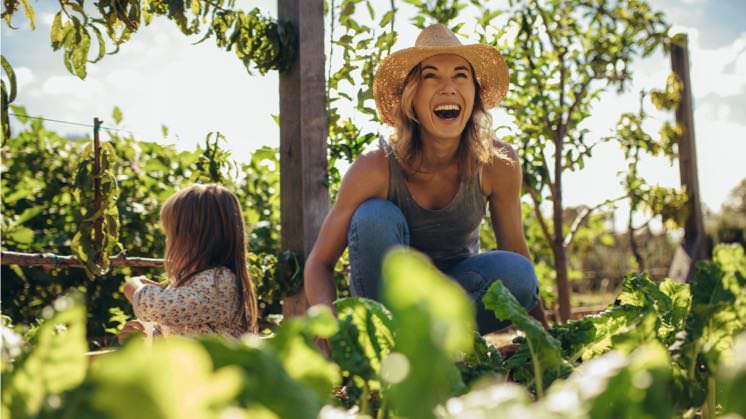Sustainable lifestyle
How to adopt a sustainable lifestyle? Tips for making a green commitment
The planet's resources are running out and we need to take steps quickly to adopt habits that are respectful of and healthy for the planet and future generations. Leading a sustainable life means more than being a responsible consumer. It is a question of living based on a commitment to the environment and making little changes to our daily lives.

According to World Health Organisation (WHO) data, there are now around 7.7 billion people living on the planet and that number is rising. Each of us has to eat, get about and consume goods and services. Unfortunately, a lot of people don't do this in ways that are responsible to the environment. The question is: Will the sustainable efforts made by just a few people make any difference? Most of the international organisations trying to preserve the planet say it will make a difference: "Every gesture counts", says Greenpeace.
In fact, a study by the University of Michigan in the United States confirms that the rules agreed upon by groups of the population guarantee the efficiency of a sustainable life strategy. The key? Each person's reputation serves as positive reinforcement for others, in other words, the fact that one person bothers to recycle correctly is inspiration for others. According to researchers, encouraging these little actions is as easy as following a few tips and doing environmental education.
What is a sustainable lifestyle
In 1986, the World Health Organization (WHO) defined the concept of lifestyle as “a way of life based on the interaction between living conditions in a broad sense and individual patterns of behaviour determined by sociocultural factors and personal characteristics”. A year later, the Brundtland Report, produced by the World Commission on Environment and Development, began aligning lifestyle and sustainability: “Development is sustainable when it meets the needs of the present without compromising the ability of future generations to meet their own needs.
Since then, the negative impact of our way of life on the environment has continued to increase. Overexploitation of natural resources, water pollution, soil pollution and deforestation, loss of biodiversity, among other things, have aggravated the environmental problems to be solved during this century. To address these major challenges, action has been taken to achieve a sustainable lifestyle globally that will prevent the planet from further deteriorating. Agenda 2030 and the Sustainable Development Goals (SDGs) are good examples. And young people, worried about their future, seem to be taking note.
Factors influencing a sustainable way of life
Achieving a sustainable lifestyle does not depend solely on individual factors; there are also collective and external factors that can drive or harm the achievement of this objective:
- Individuals
The way we relate personally to the environment in which we live determines our awareness of the need to protect the environment.
- Groups
In some societies the concept of the common good is more rooted than in others, which leads to individualism, and this is reflected in customs that affect the environment.
- External
The legislation of each country or region, its geopolitical and economic situation, the degree of innovation, among other things, may help or hinder the adoption of a sustainable lifestyle.
Tips for achieving sustainable habits
The above-mentioned Agenda 2030 is an ambitious plan that seeks to achieve prosperity that respects the planet and its inhabitants. Its 17 SDGs, especially SDG 12, which incorporates measures concerning both responsible consumption and production and sustainable management of natural resources, give some tips about what to do and how to act to lead a sustainable lifestyle.
In any case, the first step is to review our way of life and to make changes that generate sustainable habits. The most relevant ones are mentioned below:

SEE INFOGRAPHIC: Tips for sustainable lifestyle [PDF] External link, opens in new window.
In addition to those related to responsible consumption — from sustainable water use to food waste reduction —, the circular economy, energy efficiency and the move towards renewable energies, sustainable mobility, eco-design and biodegradable clothing, sustainable food, recycling and reducing plastic consumption, and environmental education — as mentioned in the previous graphic — we also reviewed some little things to avoid because, although they may not seem important, they also pollute:
Don't use aerosol deodorants
Don't throw chewing gum on the ground
Don't throw cigarette butts on the beach
Don't throw disposable wipes into the toilet
Don't release helium balloons into the air
Don't dispose of batteries in normal rubbish
Circular economy model at the Iberdrola Group
At Iberdrola, we work to be more respectful of nature in our three strategic sustainability areas: climate action, biodiversity protection, and circular economy.
For this reason, our sustainable business model is based on the circular economy model, a system for making the most of resources in which priority is given to reducing the use of new raw materials through efficiency in processes, product life extensions, and a firm commitment to the reuse and recycling of materials.




